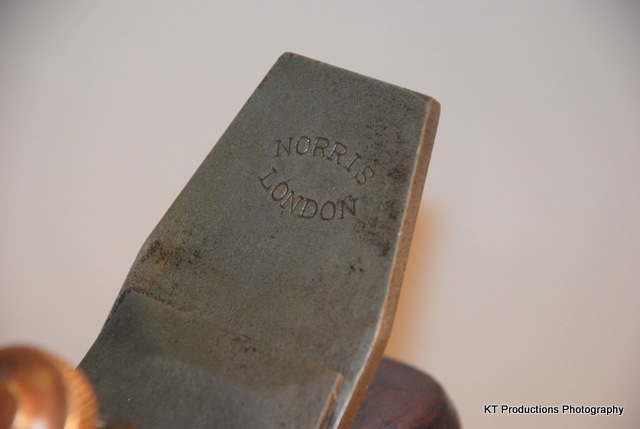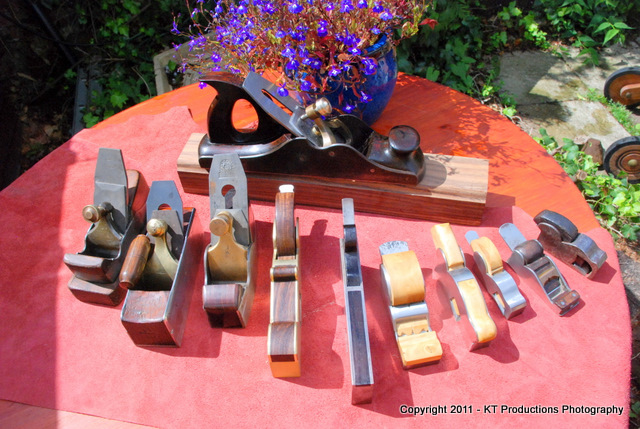Paul Hannaby
Established Member
I recently acquired a box full of planes along with a load of wood I bought, some were a bit the worse for wear so I've started cleaning them up. I usually make round stuff so I'm no plane expert! Perhaps someone here can answer my questions?
One of the planes (the one on the left) is a Stanley Bailey No. 4. What exactly is the forward / backward adjustment for? I understand it moves the blade forwards and backwards but what is the purpose of this?
Next question - The big plane is a Record No. 7 which also has the forward/backward adjuster. So far all I've done with this is to scrape of any loose rust and give it a go over with wire wool / wire brush. Would it be worth using some abrasive to clean the surface better or is what I've done good enough? There doesn't seem to be any significant pitting or surface damage.
Third question - The third plane from the left looks to me like it should have a handle at the bacK, is this right? I don't know much about it other than it says "Norris London 61" on the front and on the back it says 461.
Now for the tough one - the fourth plane has no makers marks that I can see. Does anyone have any idea what it is? On the blade I can make out the name "Hearnshaw Bros, John Bull, Cast Steel, Sheffield". Also, this one is probably the worst condition, the blade is rusted in to the body so I've applied a bit of 3 in 1 oil in the hope it will free it up before I get too heavy handed with it! It also looks like someone has been bashing the top of the blade, which I doubt does anything for the flatness of the blade!
I've included an extra photo of the third and fourth planes if that helps at all!



There are also a couple of large wooden block planes and a couple of small ones I have yet to take apart. Are these worth cleaning up or are planes like this just decorative doorstops these days! :wink:
Any clues on any of the above would be appreciated.
One of the planes (the one on the left) is a Stanley Bailey No. 4. What exactly is the forward / backward adjustment for? I understand it moves the blade forwards and backwards but what is the purpose of this?
Next question - The big plane is a Record No. 7 which also has the forward/backward adjuster. So far all I've done with this is to scrape of any loose rust and give it a go over with wire wool / wire brush. Would it be worth using some abrasive to clean the surface better or is what I've done good enough? There doesn't seem to be any significant pitting or surface damage.
Third question - The third plane from the left looks to me like it should have a handle at the bacK, is this right? I don't know much about it other than it says "Norris London 61" on the front and on the back it says 461.
Now for the tough one - the fourth plane has no makers marks that I can see. Does anyone have any idea what it is? On the blade I can make out the name "Hearnshaw Bros, John Bull, Cast Steel, Sheffield". Also, this one is probably the worst condition, the blade is rusted in to the body so I've applied a bit of 3 in 1 oil in the hope it will free it up before I get too heavy handed with it! It also looks like someone has been bashing the top of the blade, which I doubt does anything for the flatness of the blade!
I've included an extra photo of the third and fourth planes if that helps at all!



There are also a couple of large wooden block planes and a couple of small ones I have yet to take apart. Are these worth cleaning up or are planes like this just decorative doorstops these days! :wink:
Any clues on any of the above would be appreciated.











